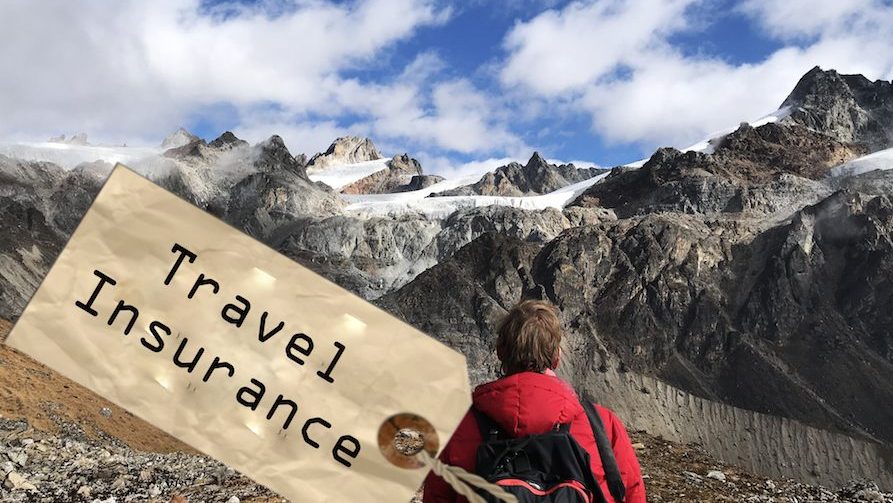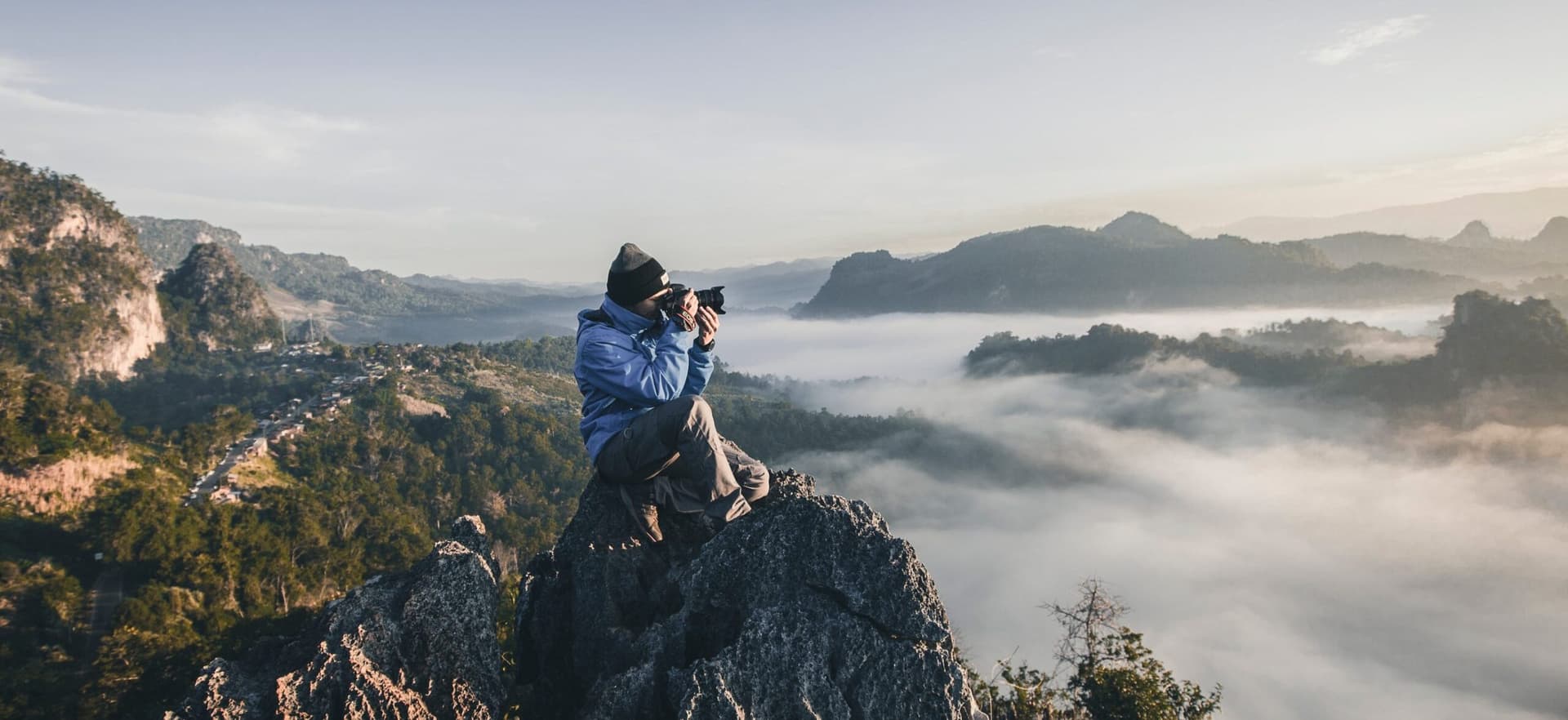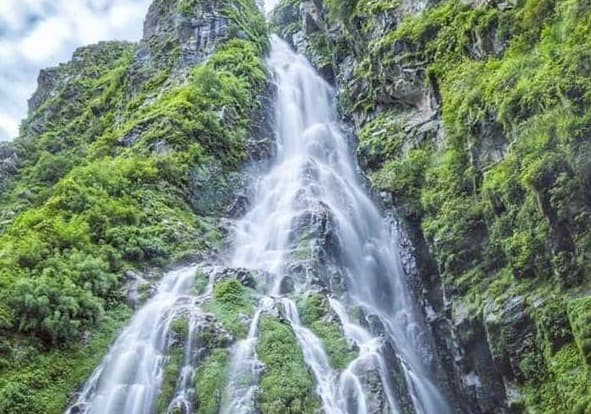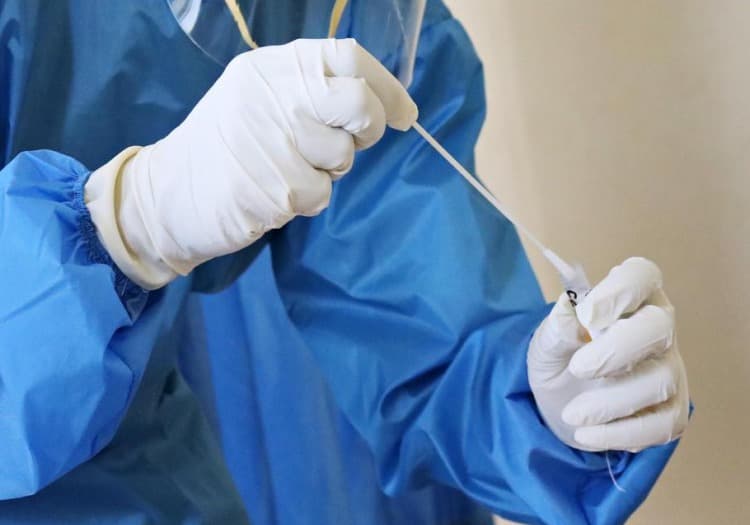Traveling is a tapestry of unmatched adventures, stimulating hurdles, and deep dives into diverse cultures. Among the myriad of destinations that capture the wanderlust of travelers, Nepal stands tall, often referred to as the planet's pinnacle. With its majestic mountains, verdant landscapes, and cities brimming with age-old stories, Nepal unfurls a panorama of unforgettable moments. Yet, to truly relish this journey and navigate it effortlessly, prioritizing safety and security in your travel preparations is paramount.
This all-encompassing guide is crafted to enlighten those journeying to Nepal with essential advice on ensuring a secure and worry-free stay. We'll traverse topics such as health measures, guarding against common scams, safeguarding oneself during treks, addressing transportation intricacies, and gaining insights into Nepal's rich culture and political nuances. So, whether your dreams are set on the challenging trails of the Annapurna Circuit, the bustling bylanes of Kathmandu, or the serene aura of Lumbini, this guide promises to arm you with vital safety knowledge, making your Nepalese odyssey truly remarkable.
Nepal Travel Safety Overview
Nepal, with its diverse landscapes and secluded areas, is predominantly viewed as a secure haven for travelers. Renowned for their unparalleled warmth and benevolence, the Nepali people invariably leave a lasting impression of goodwill on visitors. Yet, as with any global destination, maintaining a sense of vigilance and consciousness of one's environment remains vital to sidestep any unforeseen challenges.
Health and Medical Safety in Nepal
Ensuring health and medical safety is fundamental for any rewarding journey, particularly when setting foot in a multifaceted and rugged destination like Nepal. Adequate preparation can thwart potential health setbacks and guarantee a hassle-free, delightful expedition. Here's a breakdown of vital considerations:
- Vaccinations: Prior to departing from your homeland, engage with a medical expert to discuss the required immunizations for Nepal. Shots for Hepatitis A and B, Typhoid, Meningitis, Polio, Tetanus, Rabies, and Japanese Encephalitis often top the list. It's paramount to remember that vaccination requirements can differ from person to person, warranting tailored counsel.
- Altitude Sickness: Nepal's high-altitude treks are stunning but can pose risks of Acute Mountain Sickness (AMS). Symptoms include dizziness, fatigue, nausea, and shortness of breath. To prevent AMS, acclimatize properly by gradually ascending, stay hydrated, and considering bringing medication like Diamox. If symptoms persist, descend immediately.
- Travel Insurance: Comprehensive travel insurance that covers emergency evacuation and medical treatment is highly recommended. Remote areas in Nepal may lack advanced medical facilities, and evacuation to Kathmandu or another country may be necessary, which can be expensive without proper insurance.
- Food and Water: Avoid drinking tap water; opt for bottled water; or purify your water using tablets or a life straw. Be mindful of food hygiene as well. While Nepalese cuisine is delicious, avoid raw salads and peeling fruits to reduce the risk of traveler's diarrhea.
- Insect Protection: Depending on the season and the region of Nepal you are visiting, mosquitoes can be a concern. Use insect repellent and wear long-sleeved clothes, particularly at dawn and dusk, to avoid mosquito-borne diseases like malaria and dengue fever.
- Medical Kit: Carry a basic first-aid kit with band-aids, antiseptic wipes, and medication for common ailments like fever, diarrhea, and colds. Also, include any personal medication you might need.
By taking these health and medical precautions, you can focus on the breathtaking beauty of Nepal and make your travel experience a memorable one. Health is a priority, so don't overlook these measures in the excitement of planning your Nepalese adventure.
Travel Scams in Nepal
While Nepal is generally a safe and welcoming destination for tourists, it's not completely free from the occasional travel scams. Familiarizing yourself with common scams can help you avoid falling victim to them and ensure your travel experience remains positive. Here are some scams to watch out for:
- Taxi Scams: Some taxi drivers might refuse to use the meter and charge exorbitant prices, particularly when picking up tourists from the airport or major tourist spots. Always insist on using the meter, or if that's not possible, negotiate and agree on a price before starting the journey.
- Trekking Tour Scams: Nepal's treks are a major attraction, but there are scam agencies that promise much and deliver little. They may overcharge, provide poor accommodation, or even leave you midway. To avoid this, always choose a well-established, licensed trekking agency with good reviews.
- Counterfeit Money Scams: When exchanging currency, always go to a recognized bank or money exchange service. There have been instances where tourists are given counterfeit notes at local shops or by street money changers.
- Shop Scams: In markets, you might encounter shops selling counterfeit 'branded' goods or fake antiques. Be aware of unusually low-priced items. If you're interested in buying antiques, do your research as exporting antiques that are 100+ years old is illegal in Nepal.
- Guide Scams: Be cautious of self-proclaimed 'guides' who offer their services at major tourist sites. They might provide misleading information and demand high fees. Always hire guides from reputable sources.
- Gem Scams: Travelers might be approached by individuals selling 'precious' gems that turn out to be worthless. Unless you're an expert in gemstones, it's better to steer clear of such deals.
Despite these potential scams, remember that they are the exception, not the rule. Most Nepalese people are honest and helpful, and negative experiences are relatively rare. However, staying informed and alert can help ensure your trip to Nepal is memorable for all the right reasons.
Trekking Safety in Nepal
Embarking on a trekking journey in Nepal promises unparalleled vistas and the allure of treading paths surrounded by the world's towering giants. Indeed, Nepal is the proud custodian of eight out of the world's ten loftiest summits, presenting trekkers with a spectrum of routes ranging from tranquil ambles amid terraced greenery to arduous ascents in rarified zones. Yet, these breathtaking landscapes come with their own set of challenges. Here are pivotal guidelines to fortify your safety as you explore:
- Acclimatization: Venturing beyond 2,500 meters makes acute mountain sickness (AMS) a looming threat. The most judicious defense is paced acclimatization. Embrace a gradual ascent, interspersed with restorative halts, ensuring your physiology adapts. If AMS tightens its grip with severe manifestations, immediate descent is imperative.
- Professional Guide: Engaging a seasoned guide, particularly for trails kissing the skies, is invaluable. Their intimate knowledge of the lay of the land, adeptness at discerning AMS onset, and insights into best practices can be your safeguard.
- Equipment: Equipping yourself with top-tier trekking gear is non-negotiable. This ensemble should encompass resilient footwear, insulation-rich and water-resistant apparel, a trusty rucksack, and indispensable first aid essentials. Tools for orientation, like a map and compass, further enhance safety.
- Weather Awareness: The capricious temperament of mountain weather necessitates vigilance. Stay abreast of meteorological predictions, set forth at dawn to capitalize on clear skies, and target your day's end refuge by afternoon, sidestepping diminished visibility and plummeting mercury.
- Hydration and Nutrition: The rigors of trekking command optimal hydration and nourishment. Recognize that altitudinal heights prolong cooking durations, and strategize your sustenance accordingly.
- Solo Trekking: Embracing solitude in treks magnifies risks—be it misdirection, injuries, or ailments. A collective trek or, minimally, broadcasting your intended trajectory and timetable, is a wiser course.
- Travel Insurance: Opt for a travel insurance package encompassing high-altitude treks and provisions for aerial rescues during crises.
- Respect Nature: Tread lightly by adhering to demarcated paths, safeguarding the ecosystem. Responsible disposal of waste and honoring regional traditions and edicts is equally cardinal.
Prioritizing safety during your Nepalese trek is paramount. The true essence lies not in speed, but in savoring every step, basking in nature's grandeur, and culminating your expedition with a treasure trove of indelible moments.
Transportation Safety in Nepal
Nepal's mountainous terrain and often remote locations can present unique transportation challenges. Ensuring your safety while getting around in Nepal requires an understanding of these challenges and taking appropriate precautions. Here are some points to consider:
- Road Travel: Nepal's roads, particularly in rural areas, can be treacherous due to their narrow, winding nature and poor maintenance. Landslides during the monsoon season can make certain routes impassable. If you're hiring a private vehicle, make sure it's with a reputable agency. Avoid night travel whenever possible, as the roads are poorly lit and risky.
- Public Buses: While an economical choice, public buses can be overcrowded and uncomfortable. They also tend to drive fast and make few stops, increasing the risk of accidents. Tourist buses or private vehicles are a safer alternative for long-distance travel.
- Taxis and Rickshaws: These are good options for short distances within cities. Always insist on using the meter in taxis. If the driver refuses, negotiate the fare before the trip starts.
- Domestic Flights: Due to the difficult terrain, flying is often the quickest way to travel long distances in Nepal. However, the country's aviation safety record has had concerns in the past. Check the safety records of domestic airlines and choose the ones with the best reputation.
- Motorbikes: Renting a motorbike can give you more freedom to explore at your own pace, but it comes with increased risks, especially given the road conditions and traffic in Nepal. Always wear a helmet, understand the local traffic rules, and never drink and drive.
- Trekking: When trekking, stick to established trails and always inform someone about your trekking plans and expected return time. Consider hiring a guide for unfamiliar or challenging treks.
- Altitude: If you are flying or driving to high-altitude areas, ensure you have adequate time to acclimate to avoid altitude sickness.
Remember, your safety is paramount. By being informed, making smart choices, and staying alert, you can navigate Nepal safely and soak in all the incredible experiences it has to offer.
Food and Water Safety in Nepal
The vibrant flavors of Nepalese cuisine are a delightful part of the travel experience. However, unfamiliar food and water can sometimes lead to health issues, detracting from your journey. Here's how you can ensure food and water safety in Nepal:
- Water Safety: Tap water in Nepal is not generally safe to drink. Stick to bottled water and check the seal is intact upon purchase. Alternatively, consider using water purification tablets or a portable water filter. Avoid ice unless you're sure it's made from purified water.
- Food Safety: When it comes to food, the golden rule is to eat well-cooked meals, served hot. Street food can be tempting, but hygiene standards can vary greatly. Always choose vendors whose food is cooked to order and avoid food that's been sitting out.
- Raw Foods: Be wary of raw fruits and vegetables. If you must consume them, make sure they can be peeled and that you're the one doing the peeling. Salads are often washed in tap water and can carry a risk of waterborne diseases.
- Seafood: While Nepal is a landlocked country, you may find seafood in some restaurants. However, as freshness can be a concern, it's generally safer to stick to local chicken, mutton, or vegetarian options.
- Hygiene: Always wash your hands thoroughly before eating. If soap and water aren't available, use a hand sanitizer.
- Dairy Products: While dairy products like milk, cheese, and yogurt are popular in Nepalese cuisine, make sure they are from a reliable source. The traditional Nepali tea, Chai, is boiled and hence generally safe to consume.
- Spicy Foods: Nepalese food can be quite spicy. If you have a sensitive stomach, ask for your food to be made less spicy.
By following these food and water safety tips, you can indulge in the delicious flavors of Nepal without worrying about health issues. Remember, experiencing local cuisine is part of the cultural journey, but it's essential to ensure that it's done safely.
Political Situation in Nepal
Up to September 2021, Nepal had been evolving as a federal democratic republic, having emerged from a tumultuous decade of civil strife that concluded in 2006. This pivotal period led to the momentous dissolution of the monarchy in 2008. Since then, Nepal's political tapestry has been woven with fluctuating stability and recurrent government shifts.
Nonetheless, a significant stride towards stability was witnessed post the 2017 elections, which saw the Nepal Communist Party (NCP) steering the reins with a majority. Born from the amalgamation of two dominant left-oriented factions, the Communist Party of Nepal (Unified Marxist-Leninist) and the Communist Party of Nepal (Maoist Centre), the NCP symbolized a new epoch in Nepalese politics.
Though significant milestones have been achieved since the inception of the peace accord, the political arena is not devoid of tensions, agitations, and strikes. These undercurrents occasionally surface, posing potential challenges for visitors. To optimize your travel experience, it's quintessential to remain abreast of the prevailing political climate:
- Diligently peruse travel advisories released by your nation's diplomatic channels.
- Enroll for news updates concerning Nepal from credible journalistic entities.
- Engage with local inhabitants, expatriates, or fellow tourists to glean real-time insights.
- Steer clear of political assemblies, protests, or expansive public congregations, as they can unpredictably escalate.
- Heed the counsel of local administration and ensure compliance with regional traditions and legislations.
Despite these nuances, it's pivotal to underscore that Nepal predominantly unfurls a red carpet for tourists, with its tourism industry forming a cornerstone of its fiscal structure. The innate warmth, hospitality, and benevolence of the Nepalese populace make it a cherished destination for globetrotters. Navigating Nepal with awareness, reverence, and vigilance ensures a journey punctuated with rich memories and experiences.
Cultural Sensitivities in Nepal
Nepal, a mosaic of diverse ethnicities, religions, and traditions, offers an immersive cultural experience. Being cognizant and respectful of these nuances is pivotal for a conscientious traveler. Here's a guide to some of the key cultural sensitivities to bear in mind:
- Religious Reverence: Predominantly a Hindu domain with significant Buddhist influences, Nepal is dotted with sacred edifices. It's paramount to honor religious decorum, such as de-shoeing at holy precincts, abstaining from physical contact with sacral artifacts, and adopting a clockwise trajectory around Buddhist stupas and mani walls.
- Dress Decorum: Given Nepal's inclination towards modest attire, travelers should mirror this conservatism, especially in sacral locales. It's advisable for women to opt for non-revelatory clothing, while both genders should endeavor to cloak shoulders and knees.
- Physical Interactions: Nepalese ethos is conservative when it comes to public intimacy. To blend seamlessly, minimize public displays of affection. Also, the right hand reigns supreme in gestures like dining, greeting, or exchanging items, owing to cultural perceptions around cleanliness.
- Photographic Prudence: Practice discretion with your camera. Prior consent is a gesture of respect, especially when capturing human subjects or religious vignettes. Note that certain shrines might enforce a strict no-photography rule.
- Environmental Integrity: Nepal's lush landscapes and pristine terrains are its crowning jewels. Uphold environmental stewardship by ensuring meticulous waste disposal, particularly during treks. Abide by guidelines set for conservation zones to sustain the region's ecological balance.
- Gratuity Guidelines: Though not ingrained in Nepalese culture, tipping is gaining traction, especially in tourist hubs. Porters and trek guides, who offer invaluable assistance, appreciate this gesture. Let the quality of service be your tipping yardstick.
- Etiquette Essentials: "Namaste," articulated with palms adjoined at the chest, is the Nepalese hallmark of greeting. Responding in kind is a token of cultural immersion. And, as a mark of respect, unshoe yourself when gracing a Nepalese domicile.
By weaving these cultural threads into your travel tapestry, you not only honor Nepalese traditions but also amplify your own experiential depth. Such respectful engagements pave the path for meaningful connections, making your sojourn in Nepal truly unforgettable.
Travel Insurance for Nepal
Travel insurance is a crucial aspect of planning your trip to Nepal. It can protect you from financial loss arising from unforeseen circumstances, such as medical emergencies, trip cancellations, lost baggage, and more.

Here are some key considerations when looking for travel insurance for your trip to Nepal:
- Medical Cover: Ensure that your insurance covers medical emergencies, including hospital charges, doctor's fees, and repatriation. Given the popularity of trekking in Nepal, you may also want to ensure that your insurance covers helicopter rescue and evacuation from remote areas, which can be quite expensive.
- High-Altitude Trekking: If you're planning to trek, particularly at high altitudes, check that your insurance policy covers you. Some policies exclude high-altitude trekking (often above 4,000 meters), so it's crucial to confirm this.
- Trip Cancellation and Interruption: This covers you if you need to cancel or cut short your trip due to unforeseen circumstances, such as illness or a death in the family.
- Lost or Stolen Baggage: This provides coverage if your baggage is lost, delayed, or stolen. Check the limit on this cover to ensure it matches the value of what you're taking with you.
- Travel Delays: This covers additional accommodation and travel costs if your scheduled transport is delayed or cancelled.
- Adventure Activities: If you plan to participate in adventure activities such as rafting, bungee jumping, or paragliding, check if these are covered. You may need to purchase additional coverage for certain activities.
- Duration and Geographical Coverage: Check that the duration of your policy covers your entire trip and that Nepal is included in the geographical coverage.
- Exclusions: Be aware of what is not covered. For instance, most policies will not cover injuries sustained from reckless behavior or pre-existing medical conditions.
Always read the policy carefully to understand what is and isn't covered, and choose a reputable insurance provider. Having comprehensive travel insurance can provide peace of mind and protect you from significant financial costs, allowing you to enjoy your Nepal adventure to the fullest.
Nepal, with its breathtaking landscapes, rich cultural heritage, and warm, friendly people, makes for an unforgettable travel destination. Whether you're an avid trekker aiming for the snow-capped peaks, a culture enthusiast exploring the age-old temples, or a food lover eager to savor the unique flavors of Nepalese cuisine, the country has much to offer.
However, as with any travel, it's important to stay informed about safety, security, and health considerations. By being aware of potential risks, from road safety to food and water hygiene, from political climate to travel scams, you can better equip yourself to handle any challenges that may come your way.
Remember to respect the local culture and traditions, which is key to meaningful and responsible travel. It not only enriches your own experience but also contributes positively to the local community.
In the end, traveling is about embracing new experiences, forming deep connections, and creating unforgettable memories. And with the right knowledge and precautions, you can ensure that your trip to Nepal is safe, enjoyable, and truly rewarding.
Frequently Asked Questions for Safety and Security: Nepal Travel Advice
Q: Is Nepal safe for travelers?
A: Generally, Nepal is considered safe for travelers. However, like anywhere in the world, it's important to take standard safety precautions, stay informed about the current political situation, and follow travel advisories issued by your home country.
Q: What health precautions should I take before traveling to Nepal?
A: Visit your healthcare provider 4-6 weeks before your trip to get any necessary vaccinations and discuss any health concerns. Also, consider preparing a travel health kit with prescription medications, first aid supplies, and any other necessary health items.
Q: Can I drink tap water in Nepal?
A: Tap water in Nepal is generally not safe to drink. It's best to stick to bottled water, ensuring the seal is intact upon purchase. Alternatively, you could use water purification tablets or a portable water filter.
Q: Is trekking in Nepal safe?
A: Trekking in Nepal is generally safe if you take the right precautions. These include proper acclimatization, hiring professional guides for high-altitude treks, using high-quality trekking gear, and having travel insurance that covers high-altitude trekking and helicopter evacuation.
Q: What should I do in case of a medical emergency in Nepal?
A: In case of a medical emergency, you should go to the nearest hospital. In Kathmandu, Patan, and Bhaktapur, there are hospitals that offer relatively advanced medical care. For serious injuries and illnesses, especially in remote areas, you might require evacuation to a better-equipped facility or your home country.
Q: Is travel insurance necessary for Nepal?
A: Yes, travel insurance is strongly recommended for traveling to Nepal. Ensure that it covers medical emergencies, trip cancellation, lost baggage, and high-altitude trekking if you plan on doing so.
Q: What are common travel scams in Nepal?
A: Common scams include being overcharged by taxis, guides providing inaccurate or misleading information to get more money, fake trekking tours, and shops selling counterfeit goods. As always, do your research, negotiate prices, and only use services from reputable sources.
Q: How can I respect the local culture in Nepal?
A: Respect religious customs, dress modestly, refrain from public displays of affection, and always ask for permission before photographing people. Learn a few words of the local language and always greet people with a friendly "Namaste."
Important Articles Regarding Traveling in Nepal
Introduction of Nepal
Foods in Nepal
Before You Plan Nepal Trip
While You are in Nepal
Before Traveling Nepal
If you need any further information, please contact us, Email: at [email protected], Phone: at +977- 985 100 5129 (WhatsApp)




